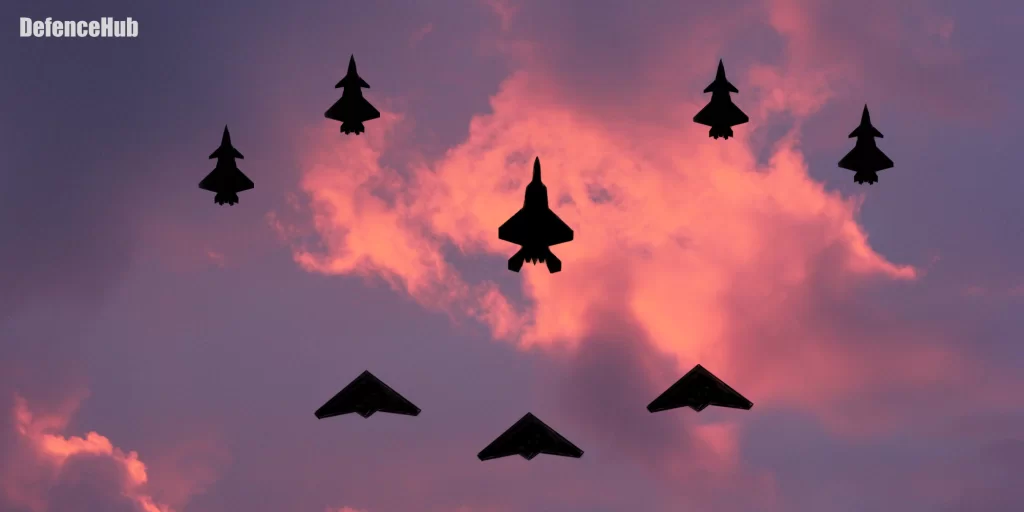Two years ago, Turkiye’s defence industry garnered worldwide recognition for the performance of its weapon systems in Syria, Libya and the Nagorno-Karabakh conflict. Now, Turkiye is attempting to leap into the big league with four simultaneous fixed-wing jet-powered aircraft programs.
Under the leadership of Ataturk, Turkiye began manufacturing aircraft in the 1920s. By the 1940s, Turkiye had a flourishing array of indigenous aircraft designs. Unfortunately, the arrival of the 1950s spelled the end of the Turkish aviation industry. The Marshall Plan and the admission into NATO caused irreparable harm to the progression of local aircraft programs and the Turkish defence industry at the time. All progress was gone. It was only in the 1970s that the Turkish defence industry restarted due to arms embargoes. Since then, each decade has been full of steady progress. In preparation for the hundredth year of the Republic, major Turkish defence projects have been hastened. This includes four jet-powered aircraft, three of which are purpose-built combat platforms.
Turkish Aerospace TFX
The TFX is a 5+ generation twin-engine stealth air superiority fighter that will eventually replace the F-16 as Turkiye’s primary fighter jet. Originally intended to accompany the F-35 in order to make up for the F-35’s drawbacks, the TFX is shaping up to be an F-22 on steroids. Preliminary specifications suggest that it may outperform both the F-22 and F-35, which is not surprising as the TFX will likely serve as the basis for a 6th gen fighter further down the line. The TFX is the largest of all 5th gen fighters, with a length of 21 metres. Its engine nozzles are wide apart in order to accommodate a sizeable rear-facing sensor package. This almost SU-57-like rear end is perhaps the most notable difference between the prototype and the concept mock-up. The TFX’s first flight has been pushed back from 2025 to 2023.
“The first flight was planned for 2025. Instead, it will fly at the end of 2023.”
CEO of Turkish Aerospace, Temel kotil
The TFX has a much larger nose than its rivals, which has led to speculations about its radar. Some have dubbed it a “stealth AWACS” due to the large radar housing, which could host 2000+ GaN T/R modules. Along with side and rear radar and a slew of other sensors, the TFX’s enormous frontal radar will give it an immense advantage in air-to-air combat.
Turkish Aerospace TİSU
The TİSU, codenamed Anka III, is perhaps one of the most elusive programs in the Turkish defence industry. Spotted years ago in an infographic, it was only officially revealed recently. It is an unmanned stealth flying-wing bomber.
Its flying-wing design and roof intakes mean that it is optimised for deep bombing missions. It prioritises stealth and internal payload capacity over manoeuvrability and speed.
With the advent of the KERKES project, Turkish drones can operate in GPS-denied airspace. This is important for the TİSU, as it can fulfil its role even against a force with advanced jamming capabilities. This would include predetermined high-value targets such as bunkers, command centres, hangars, ammunition depots and runways, along with dynamic targets such as tanks and air defence systems, which the AI could autonomously target.
The TİSU is expected to perform its first flight in March-April.
Baykar Kızılelma
Baykar’s Kizilelma is the first of its kind. This sleek aircraft bridges the gap between traditional fixed-wing drones and fighter aircraft. Once ready, it will be a carrier-capable stealth multirole unmanned fighter. Its design is geared towards high maneuverability with its canards, a departure from all other UCAVs. It’s clear that Baykar is betting big on AI with the Kizilelma, and it may just pay off in the end.
Having made its first flight on December 14, the Kizilelma represents not only a milestone for Baykar, but also a giant leap forward for the Turkish defence industry. Its maiden flight represents the dawn of the jet age for the Turkish military aviation industry.
The Kizilelma is expected to enter the inventory before 2025, essentially acting as a stop-gap fighter before the introduction of the TFX. Like the infamous TB2, the Kizilelma is a far cheaper alternative to manned combat aircraft. It offers some 5th gen fighter capabilities at a price lower than most 4th gen fighters. This presents a budget option for smaller militaries. More interestingly, it is a highly economical force multiplier for serious militaries. It can be unleashed upon an enemy airforce and act as a “sky terminator” which relentlessly hunts down enemy fighter jets in contested airspace. Such an attack by a group of Kizilelmas would send enemy fighters into disarray. Alternatively, the Kizilelma could be used for targeting helicopters, AEW&C, cargo planes and drones, allowing manned 5th gen fighters to focus on other fighter jets.
Conclusion
Turkish military aviation is advancing at a pace reminiscent of US-USSR aerospace competition in the Cold War. The sanctions, embargoes and removal from the F-35 program have only strengthened Turkiye’s defence industry. Thus it can be said that the Anti-Turkish lobbyists in Washington have shot themselves in the foot.


Loading new replies...
Join the full discussion at the DefenceHub | Global Military & Security Forum →